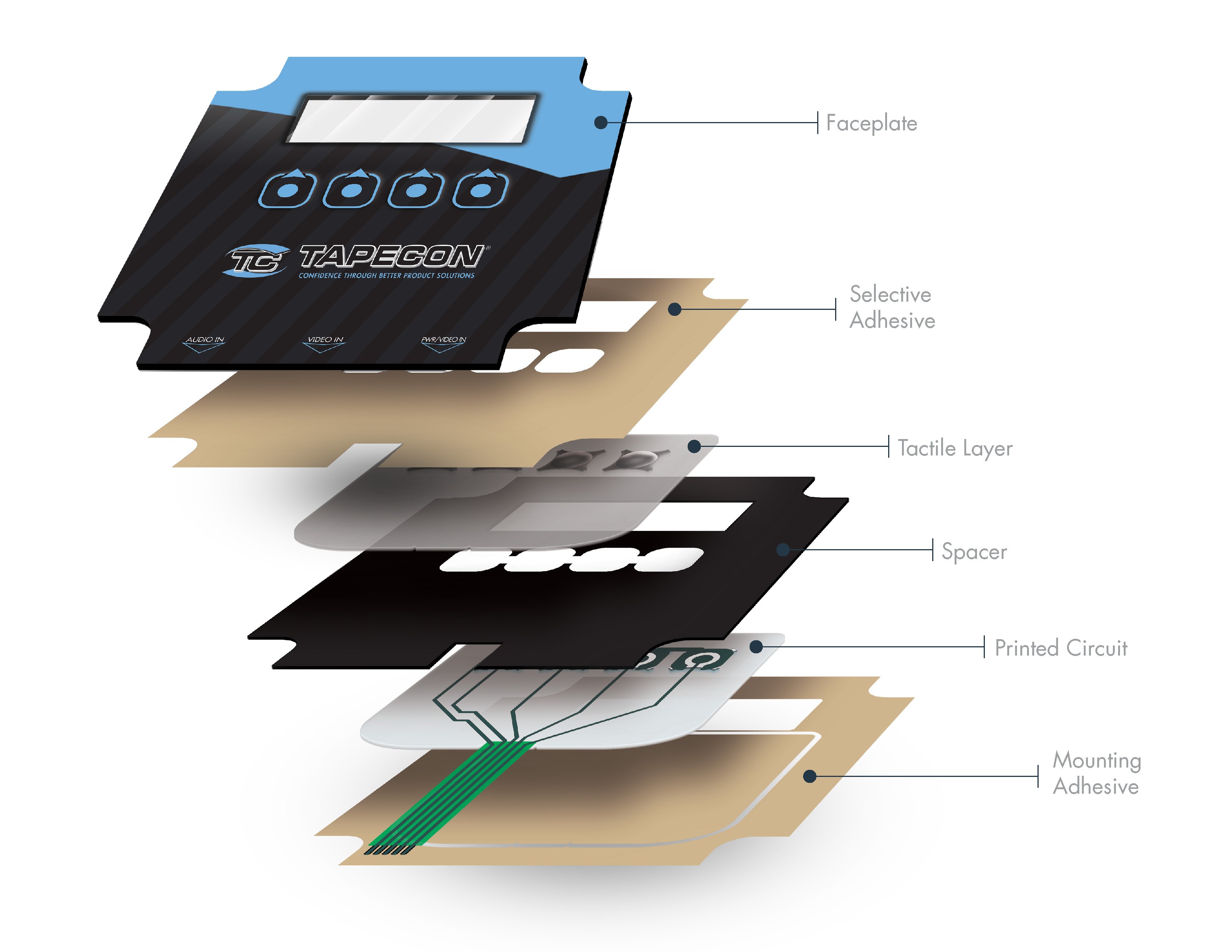How Membrane Switches Are Used to Improve Safety and Efficiency in Machinery
How Membrane Switches Are Used to Improve Safety and Efficiency in Machinery
Blog Article
Why Membrane Layer Changes Are Necessary for Sturdy Control Equipment
Membrane layer buttons play an essential function in guaranteeing the sturdiness and dependability of control systems across various sectors. Their special building enables them to endure challenging ecological aspects such as moisture, temperature extremes, and physical wear. This resilience not just expands the life expectancy of the systems they serve yet likewise reduces maintenance demands. As we discover the diverse advantages of membrane layer switches, it becomes evident that their significance goes beyond simple performance, influencing customer experience and functional efficiency. What further effects do these attributes hold for the future of control system design?
Introduction of Membrane Layer Switches
Membrane switches are versatile and reputable elements generally made use of in numerous digital control systems. The visuals overlay gives both useful and visual layout, while the spacer layer makes certain that the buttons are turned on just when pushed.
Membrane layer buttons are usually preferred in applications calling for a portable and light-weight layout, making them excellent for portable tools, clinical devices, and industrial machinery. They can be customized to fulfill details customer demands and can integrate different features such as backlighting, responsive responses, and numerous colors. Moreover, membrane switches are immune to dirt, wetness, and contaminants, making them suitable for environments where longevity is crucial.
Advantages of Longevity
In lots of applications, the sturdiness of membrane switches over deals considerable benefits that improve their overall efficiency and reliability. These buttons are developed to withstand rough atmospheres, making them ideal for usage sought after problems such as high humidity, severe temperatures, and direct exposure to chemicals. Their robust building and construction helps to stop damage from physical influence, making sure long-lasting functionality and lessening the need for regular substitutes.
Furthermore, membrane layer switches are immune to put on and tear, which is important in applications where constant interaction takes place. This resilience equates to lower maintenance expenses, as companies take advantage of minimized downtime and less service disruptions. The encapsulated design of membrane changes shields inner components from dust and wetness access, more contributing to their lifespan (membrane switch).
One more benefit is their capacity to keep regular efficiency over time. With a high tolerance for mechanical anxiety, these buttons protect their responsive feedback and electrical integrity, guaranteeing individual fulfillment. Inevitably, the longevity of membrane layer switches not only enhances operational efficiency but likewise promotes confidence in their reliability, making them a preferred option for control systems across various industries.
Applications in Various Industries
Long lasting control systems using membrane layer buttons locate extensive applications across a variety of sectors, each taking advantage of the unique features these buttons provide. In the medical market, membrane buttons are essential for tools such as client displays and analysis tools, where dependability and ease of cleansing are extremely important. Their resistance to moisture and contaminants ensures they maintain performance in clean and sterile environments.
The vehicle market leverages membrane buttons for control panel controls and infotainment systems, where they give smooth, low-profile user interfaces that enhance customer experience. These switches are additionally created to endure rough problems, including direct exposure to extreme temperature levels and vibrations.
In commercial settings, membrane layer buttons are frequently used in equipment control panels, using tactile comments and resilience essential for high-usage applications. Their capability to stand up to chemicals makes them suitable for making environments where spills and pollutants are frequent.

Customer electronic devices, such as kitchen home appliances and remotes, also use membrane layer buttons for their versatility and cost-effectiveness. Generally, the flexibility and robust nature of membrane changes make them vital throughout various industries, making sure reliable operation and longevity in control systems.
Design and Aesthetic Charm
While advice capability is extremely important, the design and aesthetic appeal of control systems geared up with membrane switches play a critical role in user engagement and overall experience (membrane switch). The visual design of these switches can considerably influence individual understanding and communication. A properly designed membrane switch improves the beauty of the gadget, making it much more attractive to individuals and promoting a connection between the user and the product
Membrane layer switches over supply a wonderful bargain of adaptability in layout, enabling makers to personalize graphics, colors, and textures to straighten with brand name identification and product aesthetic appeals. Making use of dynamic colors and distinctive patterns can attract interest, while tactile feedback can enhance the customer's communication with the device. Additionally, the ability to incorporate LED signs and backlighting into the membrane layer button style provides both useful and visual benefits, boosting presence and functionality in various settings.

Enhancing User Experience

Furthermore, membrane layer buttons can be tailored to include visual user interfaces, enhancing usability by presenting information in a clear and intuitive way (membrane switch). This personalization can include icons, labels, and color coding that guide users through complicated performances easily. Furthermore, their adaptability enables for combination in different atmospheres, guaranteeing constant performance whether in industrial equipment or customer electronic devices
The longevity of membrane layer buttons likewise plays a vital function in user experience. By enduring harsh problems and expanded usage, these switches reduce the likelihood of system failings, therefore promoting reliability and customer self-confidence. Eventually, the strategic usage of membrane layer changes not only boosts performance but additionally dramatically enhances user communication with control systems, making them a vital element in modern layout.
Conclusion

Report this page